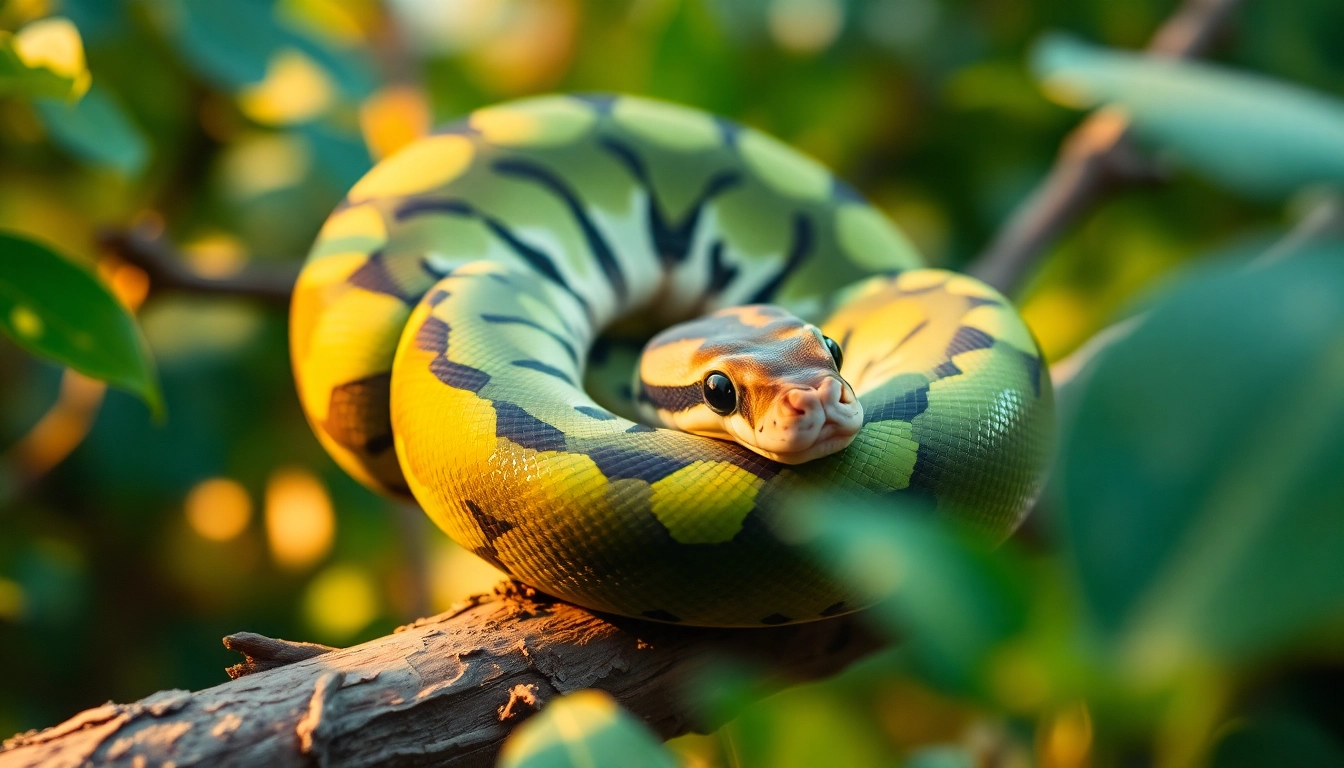1. Introduction to Baby Ball Pythons
For reptile enthusiasts, understanding the nuances of baby ball pythons can be highly rewarding, especially for first-time snake owners. These snakes, renowned for their manageable size and docile temperament, have captured the hearts of many. In this comprehensive guide, we will dive deep into the aspects of baby ball pythons—from their unique characteristics to their care requirements, ensuring you are equipped with the knowledge to provide them with the best possible home. If you want to learn more about baby ball pythons and how to care for them, read on!
1.1 What Makes Baby Ball Pythons Unique?
Baby ball pythons (Python regius) are particularly fascinating due to their distinct physical and behavioral traits. As hatchlings, they measure between 10 to 16 inches in length, making them one of the smaller python species. With their vibrant patterns and colors, they come in numerous morphs, each with unique genetic traits that contribute to their allure. These snakes possess a relatively calm disposition, allowing them to adapt well to handling, which is an essential aspect for potential owners.
1.2 The Appeal of Baby Ball Pythons as Pets
There are several reasons why baby ball pythons are a popular choice for pet owners:
- Size: Their small size is manageable for new owners and makes them easier to house.
- Temperament: They have a reputation for being gentle, making them suitable for families.
- Care Requirements: Baby ball pythons have straightforward care routines that resemble their adult counterparts.
- Aesthetics: The available color and pattern variations are stunning and often unique from breeder to breeder.
1.3 Common Myths about Baby Ball Pythons
Amidst their popularity, several myths and misconceptions surround baby ball pythons:
- First Myth: They are aggressive—Many believe that ball pythons are aggressive. In fact, they are quite docile and typically shy away from confrontation if not threatened.
- Second Myth: They won’t recognize their owners—This is false; ball pythons can learn their owner’s scent and become accustomed to their presence over time.
- Third Myth: Baby ball pythons require unique care—Their care is not drastically different from that of adults; they require similar temperature and humidity conditions.
2. Setting Up the Perfect Habitat
Creating a suitable habitat for your baby ball python is crucial for its health and overall well-being. A well-prepared environment promotes healthy growth and helps minimize stress.
2.1 Size and Type of Enclosure for Baby Ball Pythons
As baby ball pythons start their life in smaller environments, a 20-gallon tank or a plastic tub with proper ventilation is recommended. Such enclosures should allow for easy temperature regulation and humidity control while providing ample space for your python to move and explore.
2.2 Temperature and Humidity Considerations
Temperature gradients are essential for the health of your snake. The warmer side of the habitat should be around 88-92°F (31-33°C), while the cooler side can range from 76-80°F (24-27°C). Additionally, humidity levels between 50-60% are ideal. Monitoring with gauges and adjusting as necessary is key to ensuring a comfortable environment for your snake.
2.3 Choosing the Right Substrate and Accessories
When selecting a substrate, options such as aspen shavings, coconut fiber, or reptile carpet can be suitable. These materials promote good hygiene while allowing for easy cleaning. Include warm and cool hides, water dishes, and climbing branches to enrich their enclosure. The addition of decorative elements not only enhances the aesthetic but also serves the python’s natural instincts of hiding and climbing.
3. Feeding Your Baby Ball Python
Proper nutrition is essential for the health and development of your baby ball python. Understanding their dietary needs helps to ensure a healthy growth trajectory.
3.1 What to Feed Your Baby Ball Python
Baby ball pythons primarily consume rodents, specifically pinky mice and fuzzy mice, depending on their size. As they grow, they can progressively transition to larger prey. Ensuring that the food is frozen and thawed adequately (never microwave food) is essential for their well-being. Live feeding is often discouraged due to safety concerns for the python.
3.2 Feeding Schedule and Techniques
For hatchlings, feeding every 5-7 days is typically adequate, gradually increasing the prey size as the snake grows. Always observe your snake’s behavior post-feeding; it should show interest and consume food without excessive hesitation. If you notice a lack of interest in food, it may indicate stress or health issues requiring attention.
3.3 Signs of Healthy Eating Behavior
Healthy eating patterns for a baby ball python can be identified through a steady increase in weight and regular shedding. Additionally, you should look for vibrant colors and active behavior when they are not in hiding. Consistent, healthy eating ensures that your pet is developing correctly and thriving in its environment.
4. Handling and Socialization
As your new snake becomes acclimated to its surroundings, socialization through handling becomes an important aspect of its adaptation.
4.1 How to Handle Your Baby Ball Python Safely
Handling your baby ball python should be approached gently. Use both hands to support its body and allow it to move freely. Avoid sudden movements or loud noises during handling to minimize stress. As a rule of thumb, always let the snake initiate contact when possible.
4.2 Understanding Your Snake’s Body Language
Recognizing signs of stress in your ball python is essential. If it is hissing, rapid tongue flicking, or trying to escape, it may indicate discomfort. Conversely, relaxed body posture and controlled movements suggest that your snake is at ease during handling.
4.3 Frequency and Duration of Handling
A balanced handling schedule of 1-3 times a week for short periods (15-30 minutes) will help your baby ball python become accustomed to human interaction without causing undue stress. Always allow your python time to settle in before initiating regular handling sessions.
5. Health Care and Maintenance
Maintaining the health of your baby ball python requires diligence and a proactive approach to potential health issues.
5.1 Recognizing Common Health Issues in Baby Ball Pythons
Common ailments such as respiratory infections, mites, and gastroenteritis are possible. Symptoms include wheezing, excessive shedding, or lethargy. It’s vital to stay vigilant for these signs and consult a veterinarian experienced in reptile care if symptoms arise.
5.2 Importance of Veterinary Care
Having a veterinarian who specializes in reptiles can make a significant difference in your snake’s long-term health. Annual check-ups ensure preventative care and allow a professional to monitor your snake for any developing health concerns. Regular fecal tests might also be recommended to rule out parasitic infections.
5.3 Routine Maintenance and Cleaning Practices
Routine cleaning of the habitat is essential for preventing health issues. Aim to clean water dishes daily and the enclosure at least once a week. Replace the substrate as needed, and thoroughly disinfect the enclosure with a reptile-safe cleaning solution to avoid the buildup of harmful bacteria.















Leave a Reply